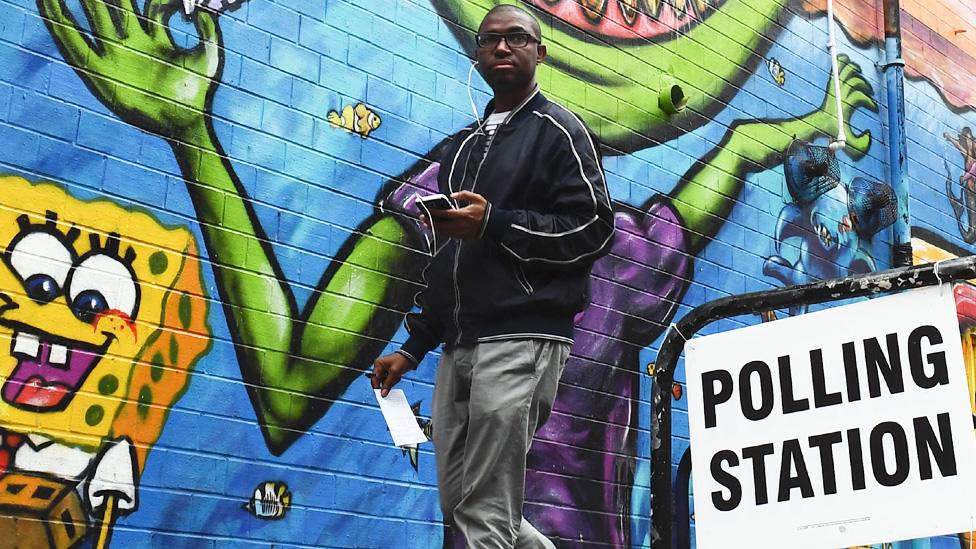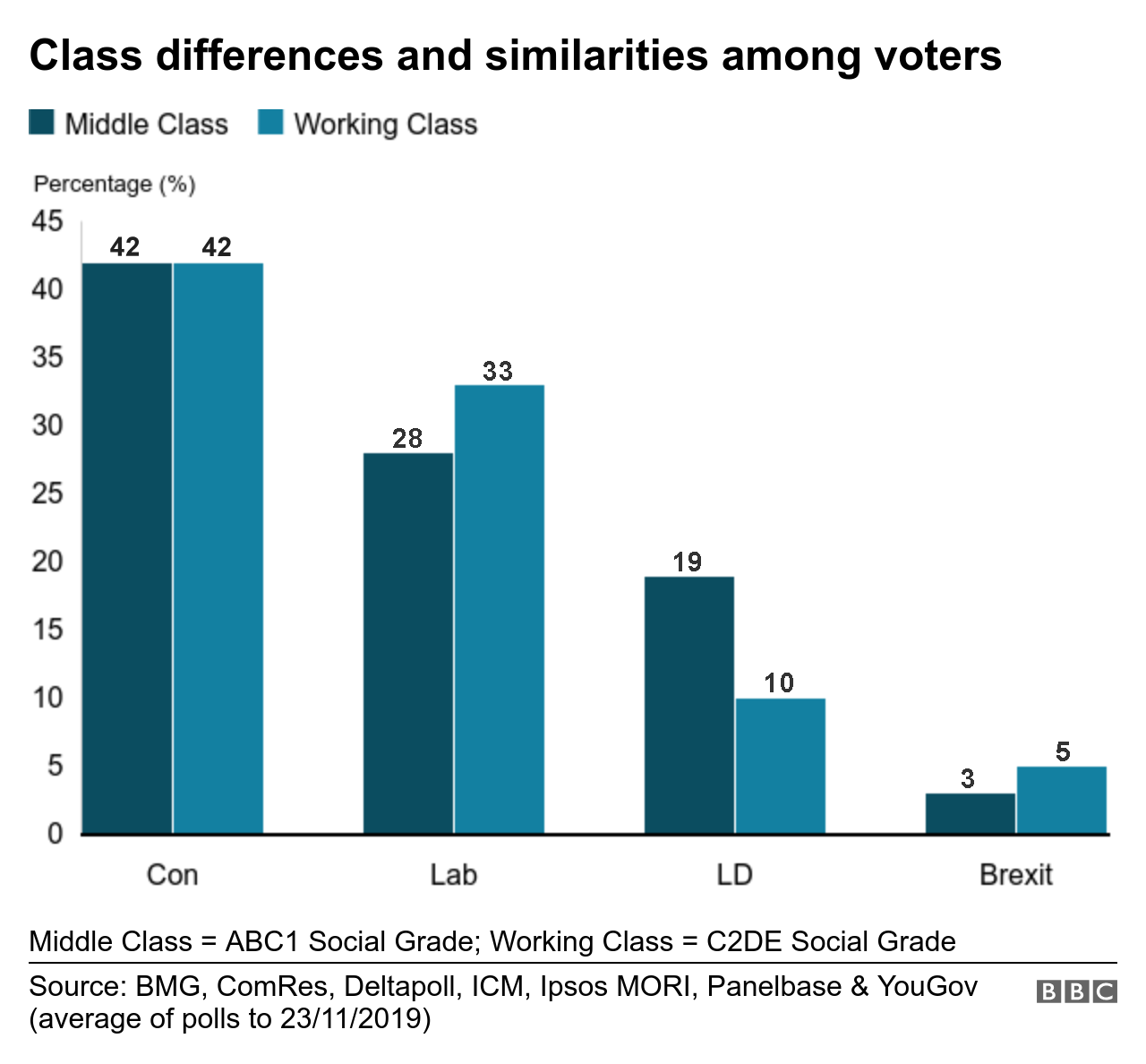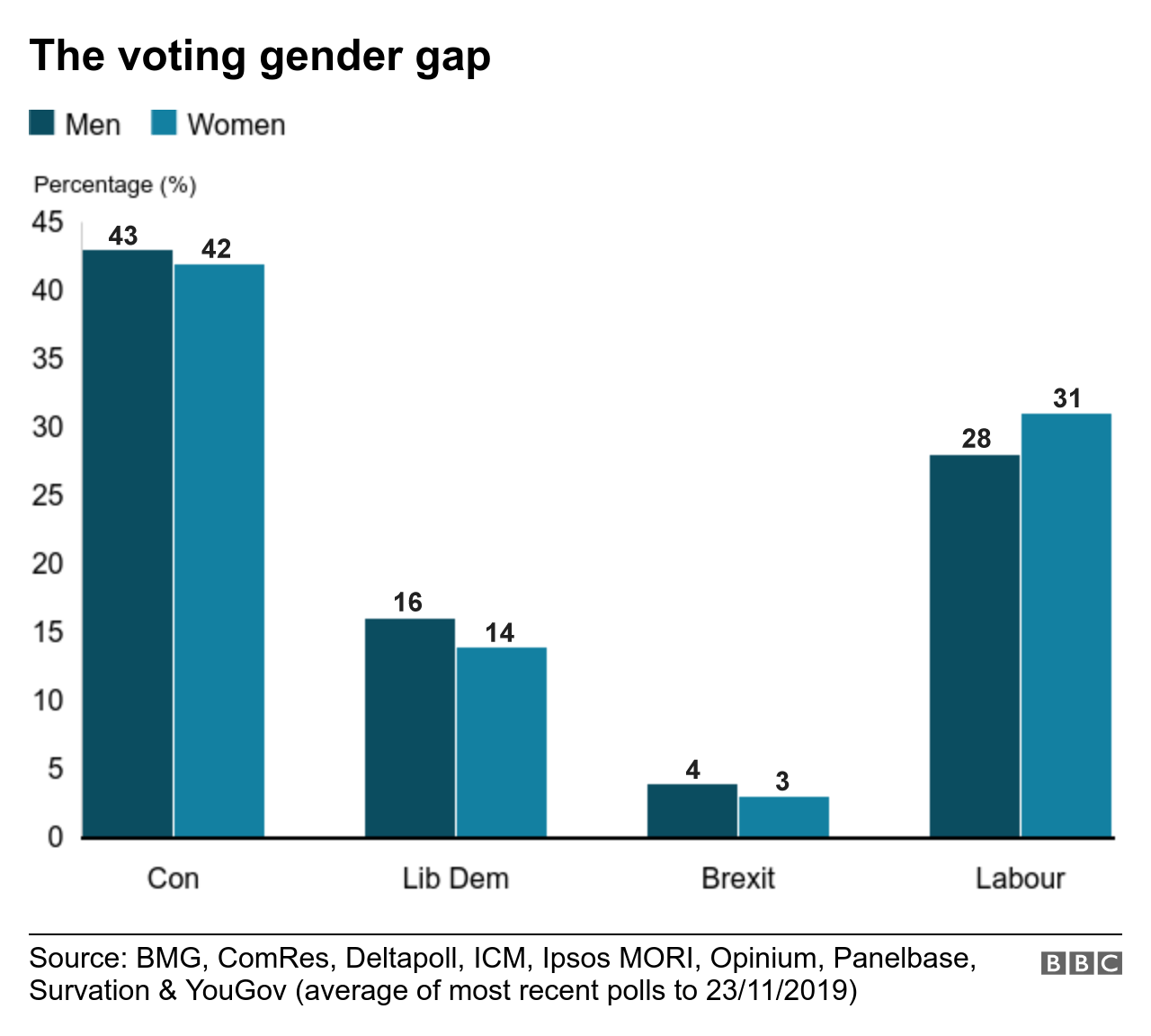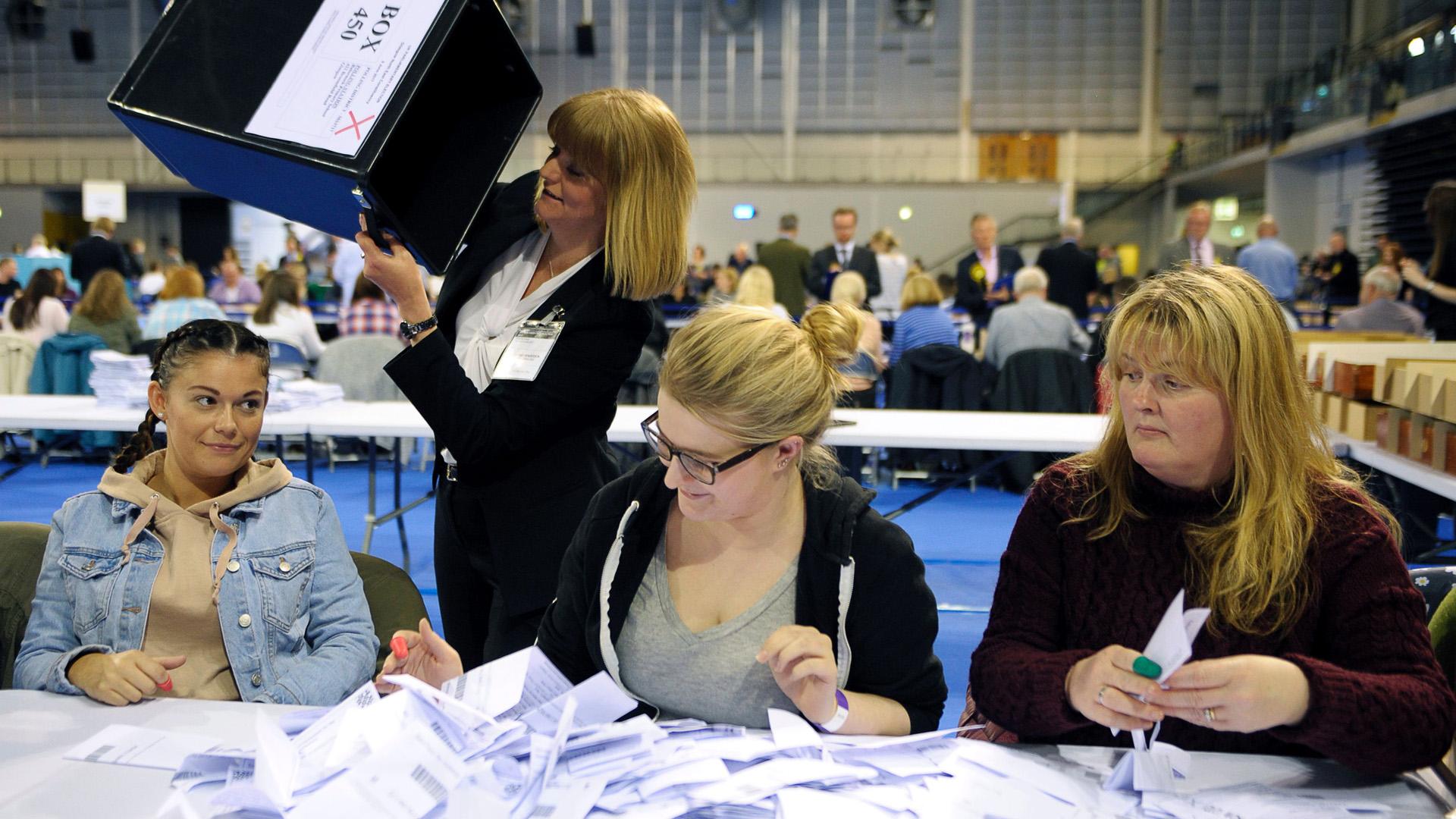General election 2019: Do people still vote according to class?
- Published

Fifty years ago, the way people voted in the UK was largely determined by social class, but different influences are at play in the 21st Century.
Back in the 1960s, political scientist Peter Pulzer famously stated that "class is the basis of British party politics; all else is embellishment and detail". People in middle-class jobs were more likely to vote Conservative, and the working class were more inclined to vote Labour. Any other differences were relatively unimportant.
The picture is now very different. The kind of job that someone does is expected to make very little difference to how they will vote at this election. On the other hand, whether they are young or old may matter a great deal.
Polling companies divide voters into ABC1s (those employed in middle-class "white collar" jobs) and C2DEs (those in a working-class "blue collar" occupation). These two groups differ little in how they propose to vote at this election.
At 42%, support for the Conservatives is the same in both, while at 33%, support for Labour - a party originally founded to advance the interests of the working class - is only five points higher among the working class than the middle class.
(The polls are GB-wide. Because of this, they cannot tell you anything meaningful about the demographic variation on the votes for SNP and Plaid Cymru).

This trend has been in evidence for some time. At each of the last three elections, the Conservatives have advanced more strongly than Labour among working-class voters. In the last election, the difference between the two groups had become quite small. This election looks set to repeat that pattern.
Conversely, the Liberal Democrats used to pride themselves on attracting support from both sides of the class divide. That claim is now more difficult to sustain. At 19%, the party's support among middle-class voters is markedly higher than among working-class supporters (10%).
Also striking, however, is the strength of support for the Lib Dems among graduates. On average, support is some 14 points higher among those with a degree than among those without. This reflects the fact that nearly all Lib Dem supporters voted Remain in the EU referendum, and that, in turn, university graduates are especially likely to back staying in the EU.
Support for the Conservatives is higher among those without a degree than among graduates - as might be expected, given that most of the party's support comes from those who voted Leave. This, in turn, helps explain why the party is no longer more popular among middle-class voters than those in working-class occupations.
However, if voting no longer differs much between working-class and middle-class voters, it does differ between other groups.


Gender
Men and women vote a little differently.
At present the Conservatives are 15 points ahead of Labour among men, but by 11 points among women. According to Ipsos Mori, such a pattern - with Labour performing a little more strongly among women than men - has been in evidence since the 2005 election.

Ethnic minority voters
A much bigger difference is to be observed between those from different ethnic backgrounds.
In contrast to the position in the polls in general, Labour are well ahead among those from a black, Asian or other minority ethnic (BAME) background. According to ICM, 56% of BAME voters intend to vote for Labour, while only 23% are likely to support the Conservatives. BMG puts the figures at 40% and 27% respectively.
Age
The most striking difference of all is between younger and older voters.
About three-fifths of those aged 65 or older are currently proposing to vote Conservative, compared with less than a quarter of those aged under 35. Conversely, nearly half of those aged less than 35 are backing Labour - but only 17% of those aged 65 or over.

There has always been a tendency for the Conservatives to be favoured in greater numbers by older rather than younger voters, with the opposite being true for Labour. Nevertheless, the gap widened noticeably in the 2015 election and even more so in 2017. It looks as though the generational gap could be just as big this time.
Younger and older voters also disagree about Brexit. Younger voters are more likely to have voted Remain and older ones for Leave. This helps explain why younger voters are less willing to vote Conservative.
However, the generational gap was widening before the EU referendum was held, so it must be about more than Brexit.
Some other generational differences in the UK may be playing a role, such as attitudes towards immigration, ease of getting on the housing ladder, and the cost of university tuition.
Either way, it is clear that age, not social class, is the division that nowadays lies at the heart of British party politics and will play a significant role on 12 December.

About this piece
This analysis piece was commissioned by the BBC from an expert working for an outside organisation.
Sir John Curtice, external is professor of politics, Strathclyde University, and senior research fellow at NatCen Social Research, external and The UK in a Changing Europe, external.
This piece uses Opinium polling on the leaders of the parties competing in the general election across the UK. Comparable results for parties with candidates in individual nations, including the SNP, are not available.

Edited by Ben Milne
- Published7 November 2019

- Published28 October 2019
